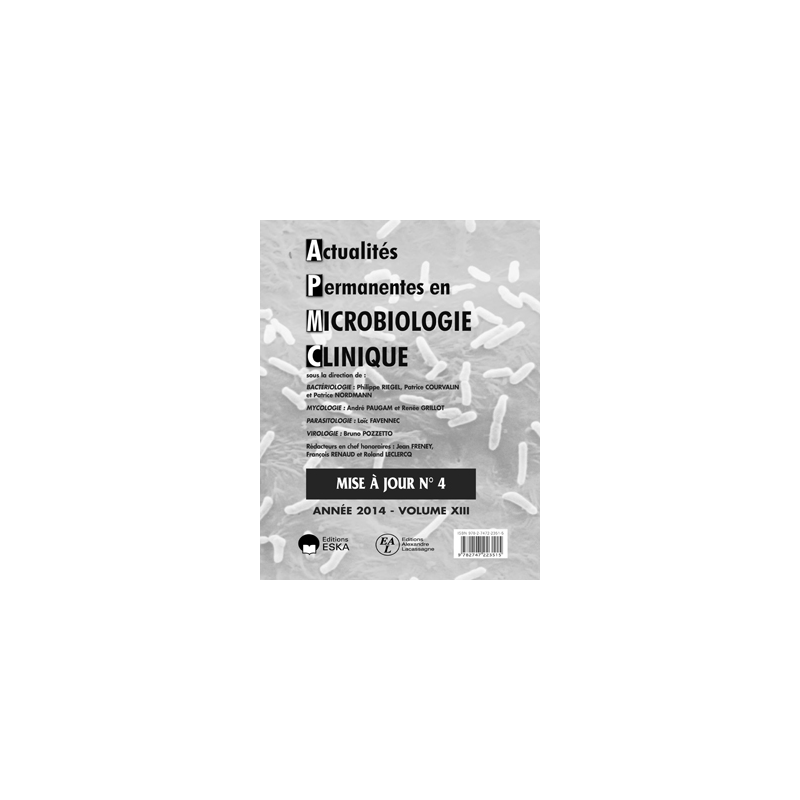



 Security policy
Security policy
(edit with the Customer Reassurance module)
 Delivery policy
Delivery policy
(edit with the Customer Reassurance module)
Résumé
Les Chlamydia sont des eubactéries à developpement intracellulaire obligatoire, comprenant des espèces pathogènes pour l'homme, C. trachomatis et C. pneumoniae, responsables respectivement d''infections oculaires et génitales, et d'infections respiratoires et des especes pathogenes chez l'animal comme C. psittaci pouvant occasionnellement provoquer des infections chez l'homme. C. trachomatis est en France le principal agent responsable d'infections sexuellement transmissibles (IST). Le nombre d'infections urogenitales a C. trachomatis ne cesse d'augmenter chez l'homme comme chez la femme. Le caractere paucisymptomatique de l'infection urogenitale est a l'origine de la dissemination et des complications observees chez la femme jeune telles que les salpingites et les grossesses extrauterines. Sa responsabilite dans le trachome et dans les IST en fait un agent prioritaire dans les problemes de sante publique. C. pneumoniae est probablement responsable de pneumopathie atypique communautaire le plus souvent benigne apres Mycoplasma pneumoniae. L'evolution souvent chronique de l'infection a Chlamydia, souleve la question de la persistance du micro-organisme malgre la reponse immunitaire de l'hote et un traitement a l'aide d'antibiotiques actifs. Leur cycle de developpement original les differencie de tous les autres micro-organismes. En effet, ces bacteries se multiplient dans le cytoplasme de la cellule hote formant une inclusion intracellulaire caracteristique.